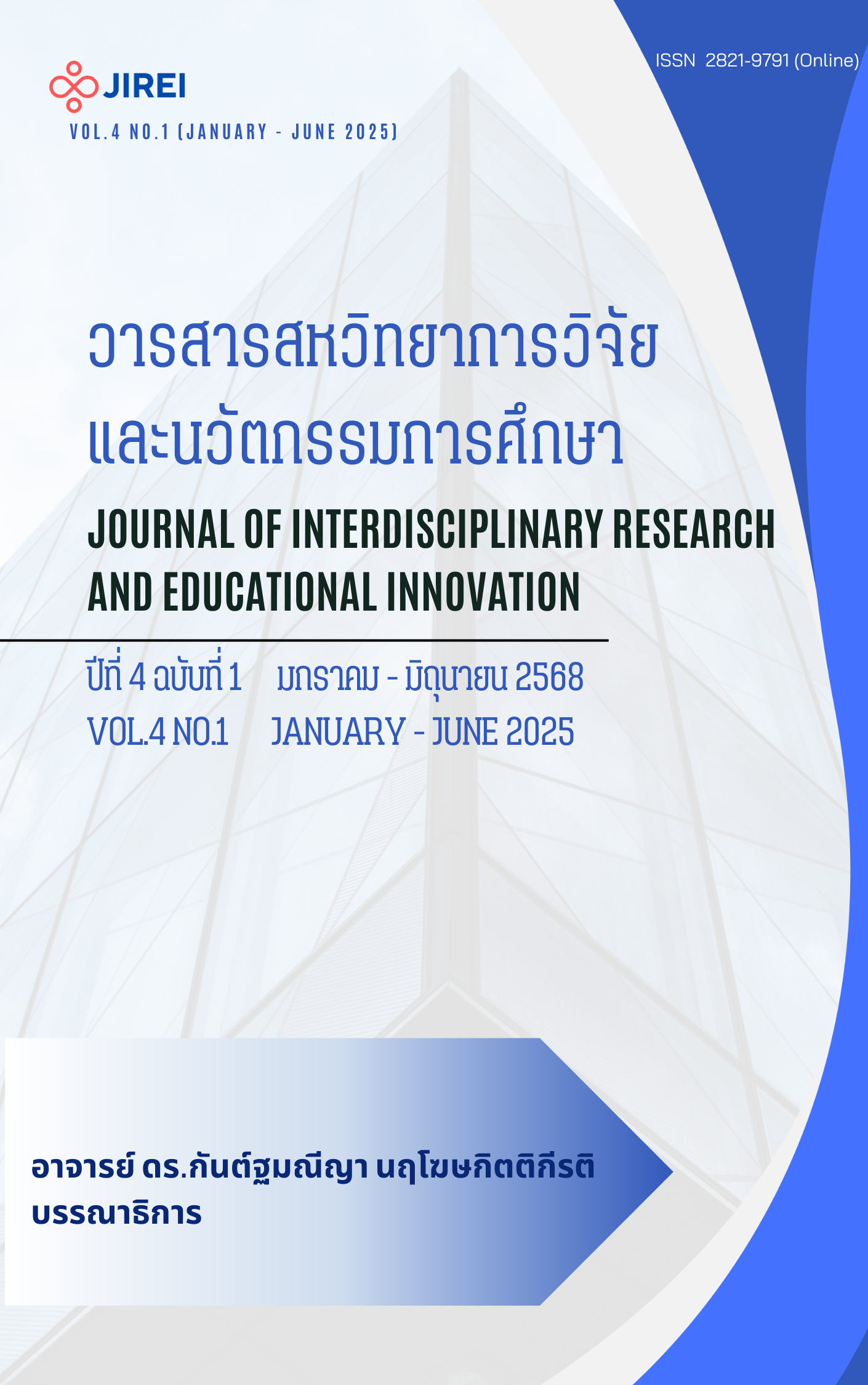การศึกษาฤทธิ์ต้านแบคทีเรียของสารสกัดมะกรูดเพื่อพัฒนาเป็นสเปรย์ระงับกลิ่นเท้า
คำสำคัญ:
มะกรูด, Staphylococcus aureus, สารสกัดสมุนไพรบทคัดย่อ
การวิจัยนี้มีวัตถุประสงค์เพื่อ 1) ศึกษาประสิทธิภาพของสารสกัดจากใบมะกรูดและผิวมะกรูดในการยับยั้งการเจริญเติบโตของเชื้อแบคทีเรีย Staphylococcus aureus, FT Isolate 1 และ FT Isolate 2 ที่แยกได้จากเท้าของผู้มีกลิ่นเท้า และ 2) คัดเลือกสารสกัดที่มีประสิทธิภาพสูงสุดเพื่อนำไปพัฒนาเป็นผลิตภัณฑ์สเปรย์สมุนไพรระงับกลิ่นเท้า การทดลองใช้วิธี Agar well diffusion พบว่าสารสกัดจากผิวมะกรูดมีประสิทธิภาพในการยับยั้งการเจริญเติบโตของแบคทีเรียทั้งสามชนิดได้ดีกว่าสารสกัดจากใบมะกรูด โดยมีค่าความเข้มข้นต่ำสุดในการยับยั้งเชื้อ (MIC) และค่าความเข้มข้นต่ำสุดในการฆ่าเชื้อ (MBC) เท่ากับ 125 µg/ml ต่อเชื้อทั้งสามชนิด จากนั้นจึงนำสารสกัดจากผิวมะกรูดที่ความเข้มข้นดังกล่าวมาพัฒนาเป็นผลิตภัณฑ์สเปรย์สมุนไพร และทดสอบฤทธิ์ต้านเชื้อแบคทีเรียอีกครั้งด้วยวิธีเดียวกัน ผลการทดสอบพบว่าสเปรย์สมุนไพรสามารถยับยั้งการเจริญเติบโตของแบคทีเรียทั้ง 3 ชนิดได้อย่างมีประสิทธิภาพเช่นกัน สรุปได้ว่าสารสกัดจากผิวมะกรูดและผลิตภัณฑ์สเปรย์สมุนไพรที่พัฒนาขึ้นมีศักยภาพในการนำไปใช้ควบคุมเชื้อแบคทีเรียที่ก่อให้เกิดกลิ่นเท้า
เอกสารอ้างอิง
อัยรินทร์ กนกเลิศวงศ์. 2565. การศึกษาฤทธิ์ต้านเชื้อแบคทีเรียสแตปฟิโลคอคคัส ออเรียส จากน้ำมันถั่วดาวอินคา. สำนักวิชาเวชศาสตร์ชะลอวัยและฟื้นฟูสุขภาพ มหาวิทยาลัยแม่ฟ้าหลวง.
อรรธวุฒิ รัตนศักดิ์. 2550. โครงสร้างตลาดผลิตภัณฑ์ระงับกลิ่นกายในประเทศไทย. สารนิพนธ์เศรษฐศาสตรมหาบัณฑิต มหาวิทยาลัยรามคำแหง.
Bassolé, I. H. N., & Juliani, H. R. (2012). Essential Oils in Combination and Their Antimicrobial Properties. Molecules, 17(4), 3989-4006.
Burt, S. (2004). Essential oils: their antibacterial properties and potential applications in foods—a review. International Journal of Food Microbiology, 94(3), 223-253. https://doi.org/https://doi.org/10.1016/j.ijfoodmicro.2004.03.022
Helander, I. M., Alakomi, H.-L., Latva-Kala, K., Mattila-Sandholm, T., Pol, I., Smid, E. J., Gorris, L. G. M., & von Wright, A. (1998). Characterization of the Action of Selected Essential Oil Components on Gram-Negative Bacteria. Journal of Agricultural and Food Chemistry, 46(9), 3590-3595. https://doi.org/10.1021/jf980154m
Radulović, N., N., Đ., R., P., & and Zlatković, B. (2010). Volatiles from the Leaves of Carum graecum Boiss. et Heldr. subsp. graecum (Apiaceae) from Serbia. Journal of Essential Oil Research, 22(6), 518-520. https://doi.org/10.1080/10412905.2010.9700387





